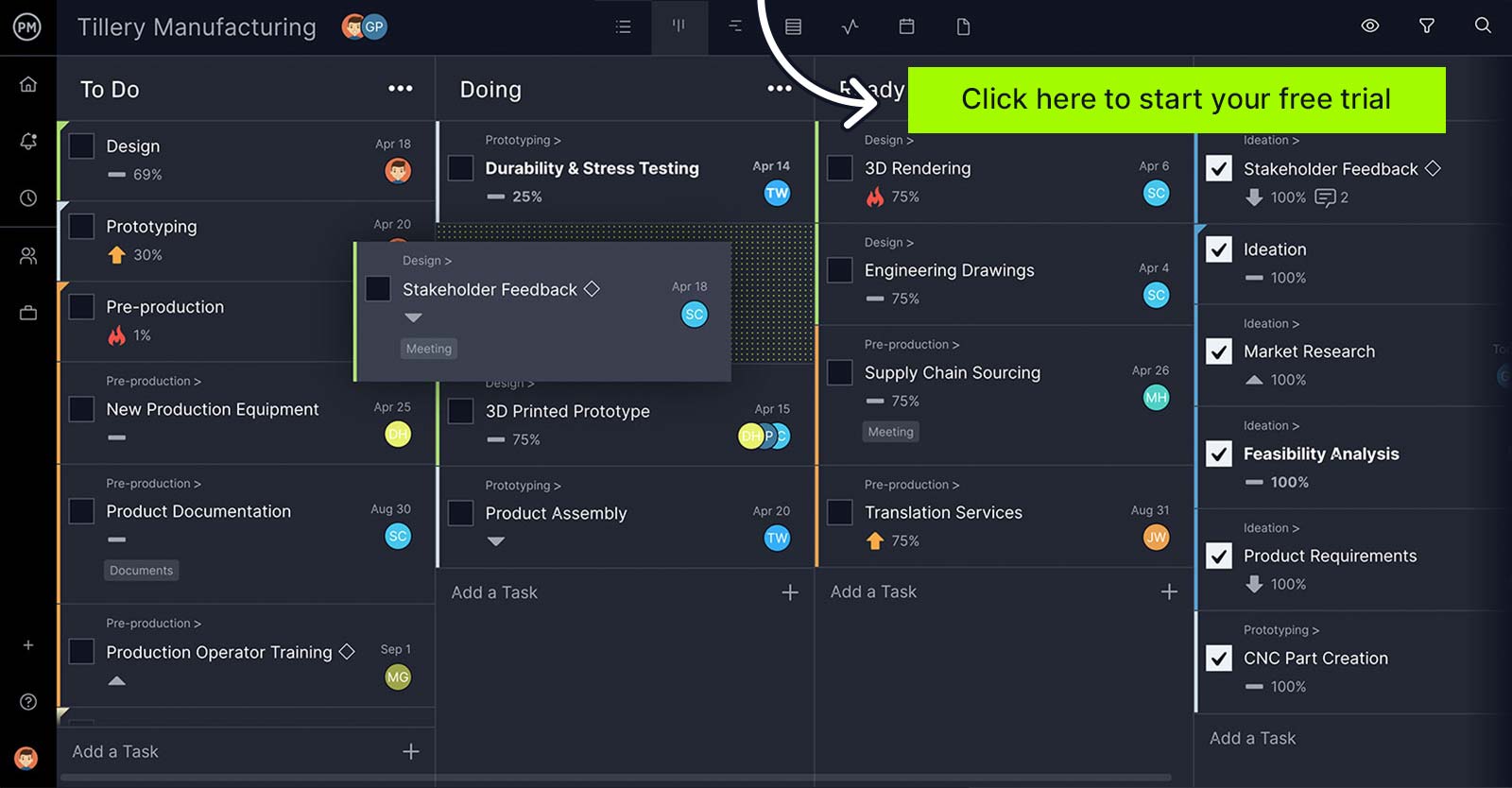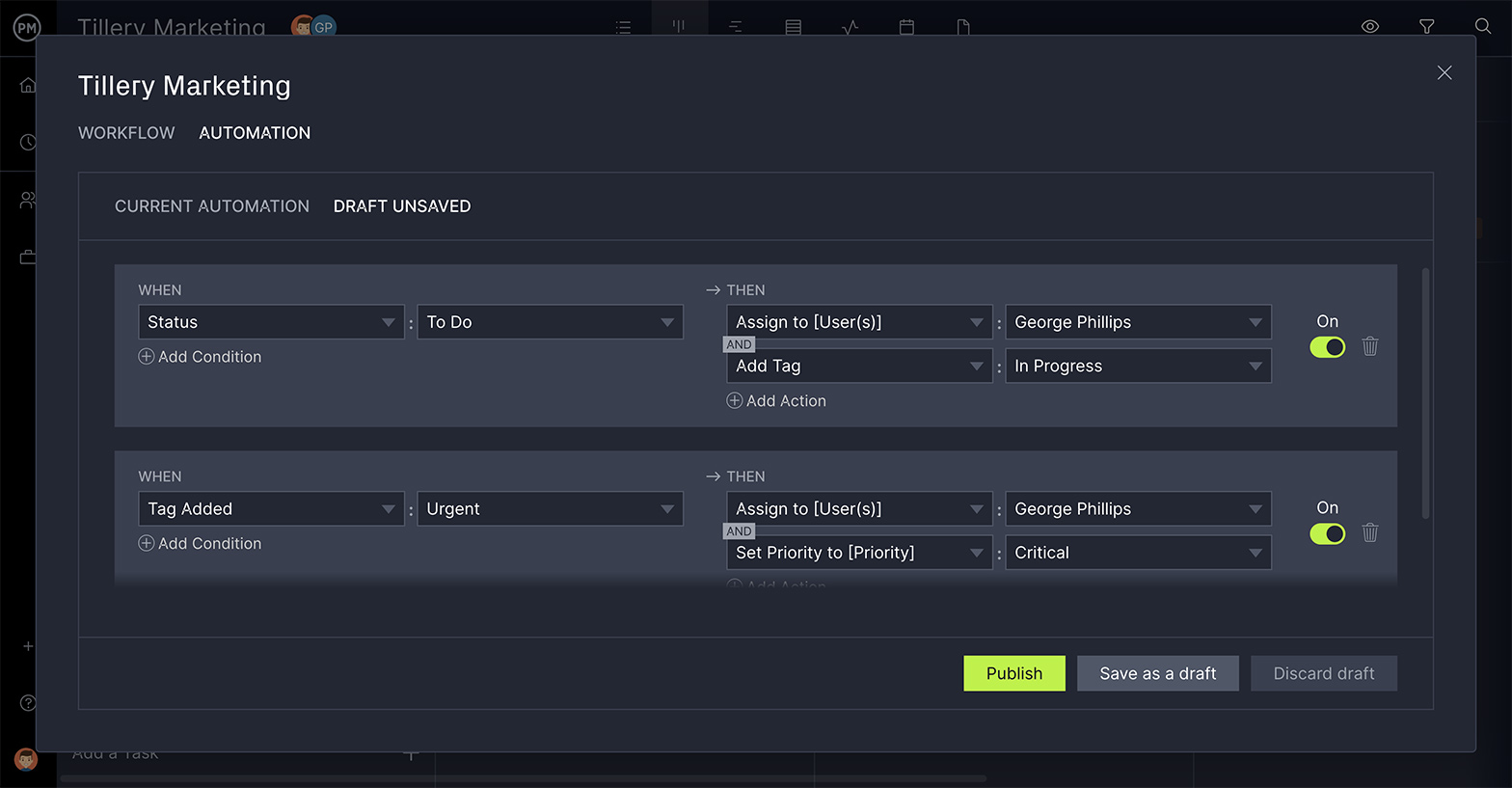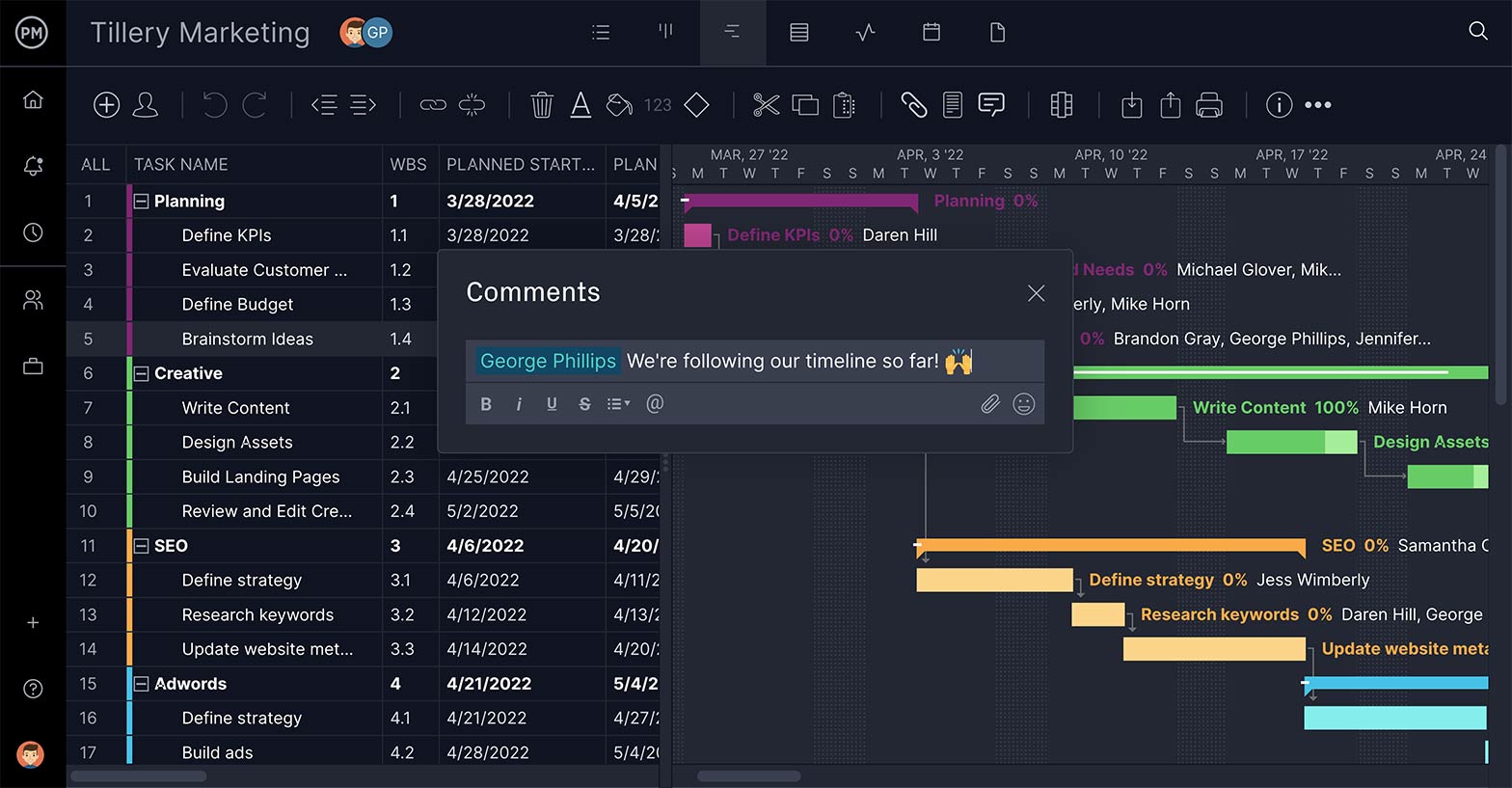Whether you call it backlog refinement or backlog grooming, it’s a crucial task for product managers and their teams. There is always going to be a product backlog, but not all items on that backlog are equal.
What Is Backlog Grooming?
Backlog grooming allows the product manager or product owner to make sure that there is an appropriate number of items on their product backlog list, and that they’re listed in order of priority.
Backlog grooming is not a one-time activity, but one that is regularly revisited and can be scheduled as ongoing in a project, usually by the product owner, product manager and relevant stakeholders.
What Is a Backlog Grooming Meeting?
A backlog grooming meeting is one of the 5 agile meetings or scrum ceremonies. It’s known by many names such as backlog grooming, backlog refinement or backlog management.
Whatever name you want to use, the purpose of the session is the same: clean up the backlog to help make a seamless transition from one agile sprint to the next. This is an activity that has become widely adopted in scrum and agile project management.
When preplanning teams will remove those user stories and tasks that are outdated. They’ll also add new user stories that are necessary due to newly discovered insights from users. If there are large user stories, called epics, these are broken down into smaller ones. Teams will also reevaluate priorities and reorder user stories as needed.
That’s a lot of backlog grooming and project management software can help organize the changes and communicate them. ProjectManager is a cloud-based work and project management software that has the flexibility that scrum teams need for backlog refinement. Our kanban boards let teams manage their backlog and then collaborate in real time to plan sprints. Managers get transparency into their team’s process and can reallocate resources to avoid bottlenecks.

Who Should Attend Backlog Grooming Meetings?
The process of backlog grooming is usually directed by the product owner or product manager. They tend to lead the meetings and make sure everything goes well. Whoever that person who facilitates the backlog grooming is obviously in attendance. As for the others, it can depend on your organization and how wedded to scrum and agile project management it is.
Often the customer success, support and QA teams have representatives there. They can offer insight into the process. However, it’s not recommended to have too many people involved in this collaborative process. It can easily become overwhelming and unproductive. That’s why scrum teams use project management software to facilitate team collaboration.
Related: Best Project Management Software Comparison for 2022
Backlog Grooming Activities
The process of backlog grooming includes many tasks. Product managers have to balance the needs of their stakeholders, their team and their project objectives. Of course, they need to take into account their resources and the power of their project management tools. Some of the activities required for a healthy backlog are outlined below.
Eliminate and Add User Stories
One of the more basic backlog grooming maneuvers is to get rid of any user stories that no longer appear relevant. These will just get in the way of your progress. However, as some user stories drop off the backlog, others will become important to include. During the project, new needs will come up, and in response, those new user stories will have to be added to the backlog.
Update Priorities and Estimates
At the same time, priorities will change. These must be reflected in the product backlog and the listing of the user stories. Therefore, backlog grooming is a regular reassessment of the priority of these user stories. Estimates will also change. These changes must be reflected in the backlog. Times can contract or expand as new information is uncovered, and those changes must be updated regularly.
Splitting User Stories
Also, you want to break down user stories that have gotten larger than they should be, which is called splitting. This is done to those user stories that are of a high priority but too large to fit comfortably in an upcoming iteration.
Backlog Grooming Benefits
Maybe you think all this grooming is more trouble than it’s worth. Maybe you’re a procrastinator that likes to wait until the last minute to get all the tasks lined up for the next sprint. Well, there are certainly benefits to regular backlog grooming, and some of those benefits are touched on below.
1. Boosts Team Efficiency
The greatest motivation of engaging in backlog grooming is to help teams continuously push forward and increase overall productivity. Since the user story is already well-defined, these don’t need further discussion.
However, sprint planning is important, and a better backlog will help plan for these more efficiently. That doesn’t mean the backlog is weighed down by details, it just needs to be ready for work.
2. Manages Backlog Chaos
The backlog is constantly being added to, either by the product manager or, depending on your organization, QA testers, developers or other team members. This can lead to a loose and messy backlog.
Therefore, backlog grooming is a way to take that seemingly chaotic list and clean it up so that it is a manageable task list that’s easier for the team to use.
3. Keeps Everyone Updated
Another benefit of backlog grooming is that it’s a way for everyone to see where the product team stands in terms of the different features, projects, bug fixes and improvements. It’s a way to keep transparency among all team members, ensuring that none of them are unaware of the current state of events.
With a well-groomed backlog, no one needs to ask another person what’s going on. The fewer interruptions, the more productive the work.
4. Delivers New Info
Backlog grooming is also a communications tool. Many people are using the backlog, and so when it’s updated that information is disseminated throughout the team. That means that everyone is on the same page, but it’s also a two-way street. The information teams receive gets feedback and the backlog also captures feedback from customers during live demos.
Backlog Grooming Best Practices
As noted, backlog grooming is ongoing. Usually, these updates are made during meetings with relevant stakeholders. The product owner will lead the meeting and have everyone look over the existing user stories in order to decide which of them can be taken off the backlog list. User stories can be added at this time, as well, or user stories are split to make them more manageable. Here are some tips to make the progress more effective.
Make it DEEP
Agile advocate Roman Pichler came up with the acronym DEEP, which stands for detailed appropriately, estimated, emergent and prioritized. These describe a well-managed backlog.
“Detailed appropriately” means that higher priority items should have more detail than lower priority ones. Backlog items should be “estimated” to understand the cost to implement. “Emergent” states that the backlog is dynamic and always moving from idea to completed work. “Prioritize” speaks to which item is most important and must be addressed before the others. These are on the top of the list, which moves down to the lowest priority last.
Have Better Meetings
The work of backlog grooming is usually done in a meeting, so conducting those meetings more efficiently makes for a more efficient backlog. Therefore, you don’t always have to invite everyone. The only essential person is the product owner. After that, only invite those who are relevant at the time. If input from others who are not needed at the meeting is required, then get that information before the meeting.
As with any meeting, come prepared. Have an agenda with goals clearly stated and make sure all assembled are aware of what those goals are and how they’re expected to contribute to achieving them. Finally, keep the meeting short. While meetings tend to go long, it’s best to keep it short. Know what must be done, and only meet maybe every two weeks for an hour or two.
Keep Customers in Mind
Backlog grooming must have a lodestar to follow and the guide is always the customer. Think about them as prioritizing the backlog. Customers can be like a rule against which all else is measured. The product is being produced for customers and therefore customers are the destination to always keep in sight.
Identify Dependencies
Sometimes there are user stories or tasks that are not able to start until another is completed. These dependencies, if not identified, can block team members and delay progress. So, be sure to identify any dependencies when backlog grooming.
Have Two Sprints Worth of Stories to Work on
When done with a backlog grooming session there should be two sprints worth of user stories that the team is ready to work on. This way they have enough work to keep them engaged until the next backlog grooming and also work to do if priorities shift.
Listen During the Refinement Process
This advice is good for a myriad of situations, both personal and professional, and however much it’s repeated it always bears further attention. While an agenda with stated goals is critical to smart backlog grooming, that doesn’t mean it’s written in stone. The product owner must keep an open mind and listen to what the team has to say, possibly adjusting as necessary.
Be Professional
In a backlog grooming meeting, there will be different opinions, but everyone on the team is working towards creating the best product. They might clash on how to do that, but their motivation is passion and experience. A product owner or manager must keep this in mind and act kindly towards all. Let everyone be heard and respected, but keep the team focused.
How ProjectManager Helps with Backlogs
ProjectManager is award-winning work and project management software that connects scrum teams and facilitates the product grooming process. But it does much more to connect teams no matter where they are, how they work or what department they’re in. Our hybrid software means that agile and traditional teams can work more productively together.
Automate Processes for Quality Control and Productivity
Keep your team focused on their sprint with workflow automation and task approvals. Managers can set as many triggers they want that release specific actions, freeing up their team of busywork. To make sure that no user story is completed improperly, there’s task approval so only those authorized to change the status of a task can move it to the done column on your kanban.

Multiple Views for Better Collaboration
The kanban is a favorite of scrum teams but sometimes you’re working with departments that have more traditional methodologies. Our hybrid tool has multiple project views that allow everyone to work how they want. Gantt charts for planning, task lists for your own work, sheet and calendar views—work how you want. All data is updated in real time across all views so there’s a single source of truth keeping everyone on the same page.

Our software allows you to keep everyone on the team updated when you change items on your backlog. Other team members are instantly notified of the changes with email alerts. Everyone stays in the loop. Team members are also alerted when they’re assigned a task. If there’s a due date change, you’ll know about it and can adjust your sprint accordingly. Communications are always clear with ProjectManager.
Backlog grooming is a way to cut out inefficiencies and work more productively. ProjectManager is a cloud-based project management software with features that help product managers with backlog grooming and more. Kanban boards collect user stories and share them among the team, who can then update their progress anywhere and at any time to keep everyone working collaboratively. Try it for yourself with this free 30-day trial.

